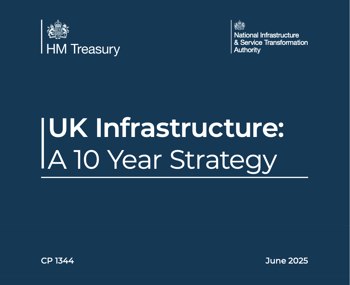Heat Policy Statement: Towards Decarbonising Heat: Maximising the Opportunities for Scotland
On the 11th June 2015, the Scottish government published its Heat Policy Statement: Towards Decarbonising Heat: Maximising the Opportunities for Scotland.
The Heat Policy Statement (HPS) explains how the Scottish administration plans to decarbonise the heat system. It ‘…sets out how low carbon heat can reach more householders, business and communities and a clear framework for investment in the future of heat in Scotland. It discusses how Scotland might reduce the amount of energy used for heat, diversify sources of heat, provide increased security of heat supply, greater local control and reduce the pressure on household energy bills.’
It sets an overall objective to move to a largely decarbonised heat system by 2050 and sets a target to deliver 1.5TWh of Scotland's heat demand by district or communal heating and to have 40,000 homes connected by 2020.
It addresses three key aspects of the heat system:
Each of these aspects is addressed by three specific objectives set out in a ‘heat hierarchy’:
- Reducing the need for heat.
- Supplying heat efficiently and at least cost to consumers.
- Using renewable and low carbon heat.
It also discusses how to stimulate potential investment to deliver de-carbonised heat through growing and emerging sectors such as district heating and geothermal; and support industries and business sectors through identifying opportunities for heat efficiency, heat recovery, and renewable sources.
Initiatives intended to deliver the targets set out in the HPS include:
- Designating energy efficiency as a National Infrastructure Priority, with an Energy Efficiency Programme (SEEP) which will provide an offer of support to all buildings in Scotland to improve their energy efficiency rating.
- The Low Carbon Infrastructure Transition Programme (LCITP), launched in March 2015, to provide tailored project development support for established and start-up infrastructure projects.
- A support programme for local authorities to develop a strategic approach to district heating and supporting use of the Scotland Heat Map.
Fergus Ewing. Minister for Business, Energy and Tourism said, “A resilient heat system which transitions to affordable low carbon heat for households, organisations and industry and which seizes the economic opportunities that this transformation offers is key to the Government's main purpose of increasing sustainable economic growth. This concise Heat Policy Statement brings together and sets out Scottish Government’s framework for achieving such a system across the heat system – demand, transmission and generation. It builds on the detailed draft Heat Generation Policy Statement and the consultation in 2014 and it represents a further component in the establishment of a fully integrated energy approach in Scotland”
Julia Evans, BSRIA’s Chief Executive commented, “We welcome the release of this statement. The Scottish government have set out a target of 11% of heat generation coming from renewable sources by 2020, and currently the figure is only 3%. Clearly if the Scottish government is going to hit their target there needs to be a fundamental change in how heat is generated... To achieve their carbon reduction targets, the Scottish Government is going to need to employ a mix of incentive and legislation to support the statement, but as importantly they need to ensure that despite how difficult the challenges they maintain their commitment to achieving their targets if they are going to give investors confidence and ultimately bring about the real change needed”
Featured articles and news
RTPI leader to become new CIOB Chief Executive Officer
Dr Victoria Hills MRTPI, FICE to take over after Caroline Gumble’s departure.
Social and affordable housing, a long term plan for delivery
The “Delivering a Decade of Renewal for Social and Affordable Housing” strategy sets out future path.
A change to adoptive architecture
Effects of global weather warming on architectural detailing, material choice and human interaction.
The proposed publicly owned and backed subsidiary of Homes England, to facilitate new homes.
How big is the problem and what can we do to mitigate the effects?
Overheating guidance and tools for building designers
A number of cool guides to help with the heat.
The UK's Modern Industrial Strategy: A 10 year plan
Previous consultation criticism, current key elements and general support with some persisting reservations.
Building Safety Regulator reforms
New roles, new staff and a new fast track service pave the way for a single construction regulator.
Architectural Technologist CPDs and Communications
CIAT CPD… and how you can do it!
Cooling centres and cool spaces
Managing extreme heat in cities by directing the public to places for heat stress relief and water sources.
Winter gardens: A brief history and warm variations
Extending the season with glass in different forms and terms.
Restoring Great Yarmouth's Winter Gardens
Transforming one of the least sustainable constructions imaginable.
Construction Skills Mission Board launch sector drive
Newly formed government and industry collaboration set strategy for recruiting an additional 100,000 construction workers a year.
New Architects Code comes into effect in September 2025
ARB Architects Code of Conduct and Practice available with ongoing consultation regarding guidance.
Welsh Skills Body (Medr) launches ambitious plan
The new skills body brings together funding and regulation of tertiary education and research for the devolved nation.
Paul Gandy FCIOB announced as next CIOB President
Former Tilbury Douglas CEO takes helm.
UK Infrastructure: A 10 Year Strategy. In brief with reactions
With the National Infrastructure and Service Transformation Authority (NISTA).






















